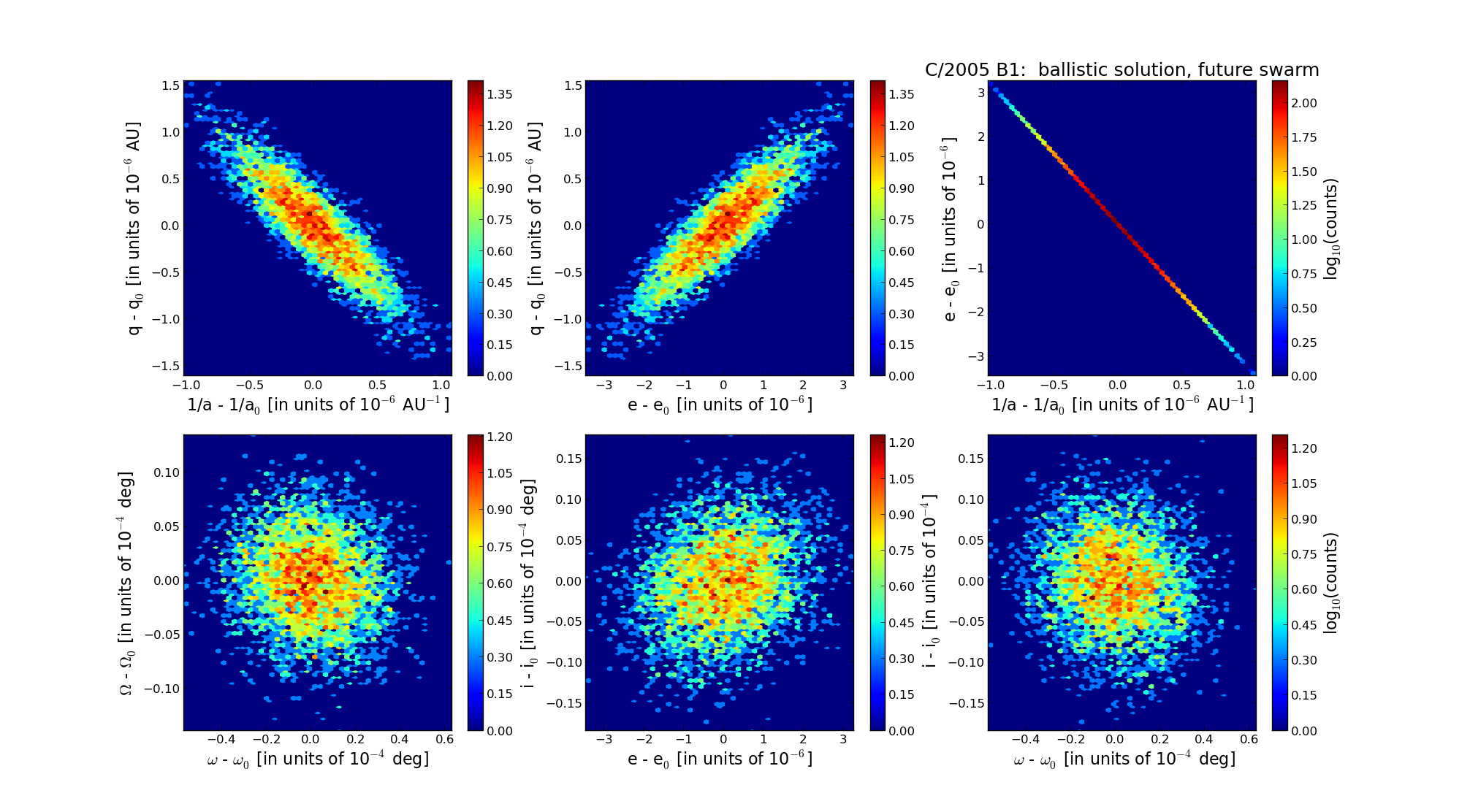C/2005 B1 Christensen
more info
C/2005 B1 was discovered by Eric Christensen on 16 January 2005 on Catalina Sky Survey images and its cometary apperance was soon confirmed [IAUC 8466, 2005 January 17]. Next, 2004 FS101 reported as asteroidal object by LINEAR and Spacewatch in March 2004 was identified with C/2005 B1 [IAUC 8469, 2005 January 19].
This comet made its closest approach to the Earth on 30 September 2006 (3.003 au), seven months after perihelion passage (see figure).
Solutions given here are based on data spanning over 3.6 yr in a range of heliocentric distances: 6.94 au – 3.205 au (perihelion) – 5.49 au.
This Oort spike comet suffers small planetary perturbations during its passage through the planetary system that lead to a more tight future orbit (see future barycentric orbit).
See also Królikowska 2014 and Królikowska and Dybczyński 2017.
This comet made its closest approach to the Earth on 30 September 2006 (3.003 au), seven months after perihelion passage (see figure).
Solutions given here are based on data spanning over 3.6 yr in a range of heliocentric distances: 6.94 au – 3.205 au (perihelion) – 5.49 au.
This Oort spike comet suffers small planetary perturbations during its passage through the planetary system that lead to a more tight future orbit (see future barycentric orbit).
See also Królikowska 2014 and Królikowska and Dybczyński 2017.
| solution description | ||
|---|---|---|
| number of observations | 1517 | |
| data interval | 2004 03 18 – 2007 11 03 | |
| data type | perihelion within the observation arc (FULL) | |
| data arc selection | entire data set (STD) | |
| range of heliocentric distances | 6.94 au – 3.21 au (perihelion) – 5.49 au | |
| detectability of NG effects in the comet's motion | comet with determinable NG~orbit | |
| type of model of motion | GR - gravitational orbit | |
| data weighting | YES | |
| number of residuals | 2991 | |
| RMS [arcseconds] | 0.45 | |
| orbit quality class | 1a+ | |
| orbital elements (barycentric ecliptic J2000) | ||
|---|---|---|
| Epoch | 2310 12 18 | |
| perihelion date | 2006 02 23.97062088 | ± 0.00010271 |
| perihelion distance [au] | 3.20474573 | ± 0.00000043 |
| eccentricity | 0.99924889 | ± 0.00000105 |
| argument of perihelion [°] | 103.142936 | ± 0.000018 |
| ascending node [°] | 195.600102 | ± 0.000004 |
| inclination [°] | 92.535311 | ± 0.000005 |
| reciprocal semi-major axis [10-6 au-1] | 234.37 | ± 0.33 |
| file containing 5001 VCs swarm |
|---|
| 2005b1_w.bpl |

